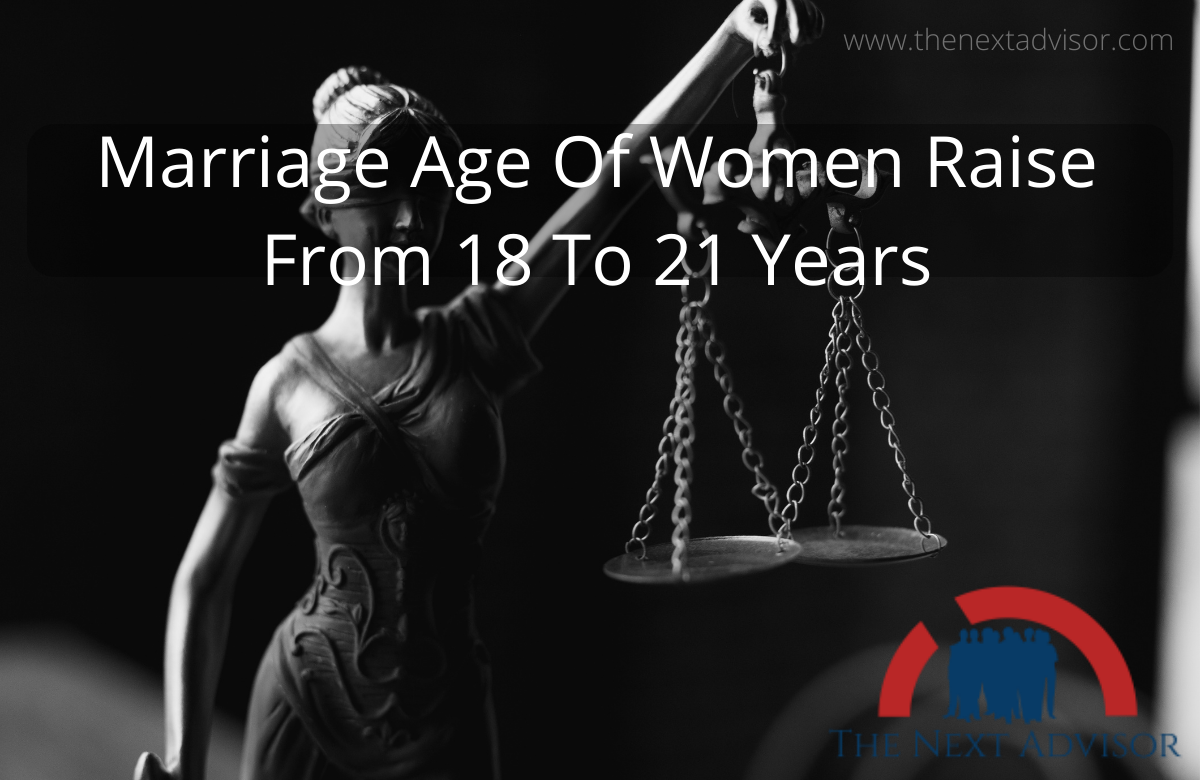The proposal to raise the minimum age of marriage for women from 18 to 21 was declared by the Union Cabinet on December 15, a year after Prime Minister Narendra Modi said that the plan is under review.
Following the Cabinet’s approval, the Government will introduce an amendment to the Prohibition of Child Marriage Act, 2006, and consequently bring amendments to the Special Marriage Act and personal laws such as the Hindu Marriage Act, 1955.
Background for Marriage Age Of Women
-
Prime Minister Modi, during his Independence day speech last year, had made a mention of the proposal.
-
It is based on recommendations submitted to Niti Aayog in December 2020 by the Centre’s task force, headed by Jaya Jaitly, which was constituted to examine “matter pertaining to the age of motherhood, imperatives of lowering MMR (Material Mortality Rate), improvement of nutritional levels and related issues”.
Not for Population Control
-
The reasoning behind the recommendation was never one of population control.
-
Recent data released by NFHS 5 (National Family Health Survey) have already shown that the Total Fertility Rate is decreasing and the population is under control.
-
The idea behind it (the recommendation) is the “empowerment of women”.
-
According to data from NFHS 5, India attained a Total Fertility Rate of 2.0 for the first time, below the replacement level of TFR at 2.1, indicating that a population explosion in the coming years is unlikely.
-
The data also revealed that child marriage has come down marginally from 27 percent in 2015-16 to 23 percent in 2019-21.
-
The task force, set up in June 2020 by the Ministry of Women and Child Development, also included Dr. V K Paul of Niti Aayog and Secretaries of the WCD, Health and Education ministries, and of the Legislative Department, has recommended that a comprehensive public awareness campaign be chalked out to encourage social acceptance of the decision.
-
It has also sought access to schools and universities for girls, including transportation in the case of educational institutes in far-flung areas.
- The committee has further recommended that sex education be formalized and introduced in the school curriculum.
-
Training of women in polytechnic institutes, skills and business training, and livelihood enhancement have also been recommended as means to ensure that an increase in marriageable age can be implemented.
-
Section 5(iii) of the Hindu Marriage Act, 1955 sets 18 years as the minimum age for the bride and 21 for the groom.
-
The Special Marriage Act, 1954 and the Prohibition of Child Marriage Act, 2006 also prescribe 18 to 21 years as the minimum age of consent for marriage for women and men, respectively.
India had a law prescribing the minimum age of marriage, known as the Sarda Act, 1929 later renamed as the Child Marriage Restraint Act (CMRA) 1929.
-
It was the first law created to prohibit child marriage which extended to the whole of India except Jammu and Kashmir.
-
It prohibited the marriage of girls below the age of 15 years and boys below the age of 18.
-
1978 the law was amended to raise the minimum age of marriage to 18 years for girls and 21 years for boys.
-
This position remains the same even in the new law called the Prohibition of Child Marriages Act (PCMA), 2006, which replaced the CMRA.
-
According to the law, if a marriage had occurred between a boy aged between 18-21 years and a girl below the age of 18 years, it implied imprisonment of up to 15 days along with a fine of one thousand rupees.
-
35% of females in India are married before the age of 21 years. The situation is grave in some states.
-
Surprisingly, the situation in West Bengal is the worst across all states with the mean marriage age only 20.9 years and almost 47% of females getting married before the age of 21 years, even worse than Bihar and Rajasthan,
Pros of Increasing Marriage Age of Women
-
Evidence shows that delay in marriage has positive economic, social, and health effects for families, women, children, and the society at large.
-
While the risk of poor child health outcomes is the lowest for women who have their first births between 27 and 29, the broad range for optimal age of motherhood is 21 to 35 years.
Cons of Increasing Marriageable Age of Women
-
It is important that girls are not pushed into marriage early marriage should not be compulsory for them to gain social and economic status. Yet an increase in the minimum age of marriage to 21 years will be counterproductive.
-
Increasing the age of marriage to 21 years would mean that girls will have no say in their personal matters until they are 21.
-
The law has been used by parents against eloping daughters. It has become a tool for parents’ control and for the punishment of boys or men whom girls choose as their husbands.
Can see an increase in female infanticide
Moreover, raising the female marriage age in the countries that have high son preference and high son preference and high poverty may have the unintended consequence of increasing the prevalence of female infanticide and sex-selective abortion.



























